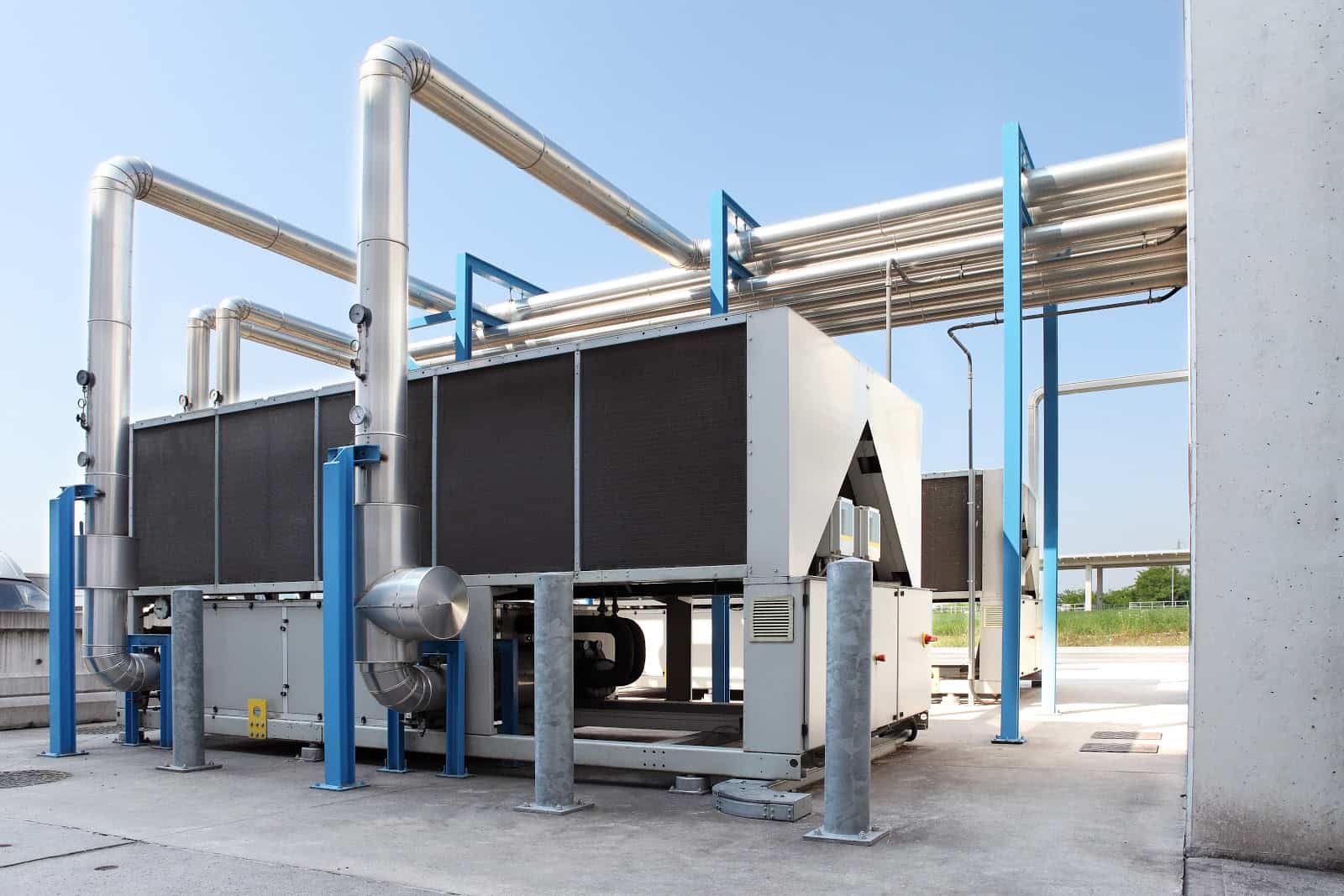Air Handling Units (AHUs) vs. Fan Coil Units (FCUs)
In HVAC (Heating, Ventilation, and Air Conditioning) systems, Air Handling Units (AHUs) and Fan Coil Units (FCUs) are crucial components that play...
Floor, wall and ceiling mounted to meet your unique project design.

An air handling unit (AHU) is a machine that conditions (i.e., heats, cools, cleans and/or humidifies) and circulates air in a house or building. AHUs are components of complete heating, ventilation, and air conditioning (HVAC) systems.
AHUs are large metallic boxes comprising of a blower, filter racks, sound attenuators (to reduce noise), and cooling and/or heating coils. Connected to the HVAC’s ductwork, AHUs are installed inside and outside of buildings, with the rooftop being common for the latter.
While commonly known as large machines, it should be noted that AHUs come in different sizes and with a range of configurations. In terms of size, you can get internal AHUs for houses too -- these are known as terminal units.
However, those with multi-unit buildings will look at large air handlers, such as makeup air units (MAU).
As noted earlier, the main components of an AHU system are its casing or housing, the fan, the heating and/or cooling coil, filters, humidifiers, and mixing box.
However, these are broad terms, within each of them you have different options, such as the following:
The AHU’s housing/casing is typically built from metal. In it, the AHU’s internal systems -- such as its fan, filters, etc -- are housed. Besides protecting those systems from outside threats, such as water and dust, the housing could also contain a drain pan to prevent condensation.
The centrepiece of an AHU is its centrifugal fan, which is necessary for pushing cool or hot air to different parts of the building. There are a number of different types of fans to choose from, each with its own unique characteristics, advantages, and drawbacks.
The leading AHU fan types are:
The one you would select depends on the requirements of your building, which can be determined through software simulation and analysis before construction.
There are two primary components to a fan: the blade and the motor.
The industry is continually working on both so as to improve energy efficiency. For example, variable air volume (VAV) lets you configure your fan to adjust its speed based on the load condition.
To provide heating or air conditioning, a heating and/or cooling coil is needed. These coils are typically manufactured with copper (tubes) and aluminum (fins).
However, you could configure your coils in multiple ways, such as changing the number of fins, alter the fin design, and selecting from several circuiting options, among others. Your goal is to select the option that has the least chance of corrosion, freezing, and carrying over moisture.
The AHU’s filters are there to prevent dust and other potentially harmful particulate matter from entering the air-conditioned area. Depending on your budget and needs, you can choose from the following types of filters for your HVAC needs.
Based on the Minimum Efficiency Reporting Value (MERV) by the American Society of Heating, Refrigerating and Air-Conditioning Engineers (ASHRAE), panel filters are your baseline option in terms of performance and efficiency.
However, they are sufficient for commercial, residential and industrial buildings, and are your most affordable options.
At the high-end, which is often seen in laboratories and high-tech manufacturing facilities, HEPA filters can remove up to 99.97% of particles of up to 0.3 micron in size, which -- at 0.000012-inch -- is minute, such as dust, bacteria, and other contaminants.
Humidifiers are incorporated for winter or cold-temperature environments. Like filters and fans, they are available in multiple types, i.e., Spray Types, Steam Pan Types, and Steam Grid Types. In general, the idea is to have the AHU generate steam that would go into the room.
Mixing boxes -- also known as air-mixing plenums -- mix the return air (i.e., the air that circulates into the AHU) and fresh air from outside for re-sending into the air-conditioned/heated room. The air that is not mixed is sent back outside via the AHU’s exhaust.
AHU primarily work in one of two ways, i.e., draw-through or blow-through.
The fan is placed after the burner.
The AHU’s fan pulls in the air and the air is then put through the AHU’s internal system (mixing box, filters and, its cooling coil) before reaching the air-conditioned room or area.
The fan is put before the burner.
The AHU fan pushes the air through its internal system before entering the air-conditioned area or room.
Selecting the right AHU for your building is not a trivial task. Not only are there many different ways to configure an AHU, but you must pay heed to your budget and efficiency goals.
A good starting point would be to consult technical manuals by the Air Conditioning Contractors of America (ACCA), such as ACCA Manual J and ACCA Manual S, to determine your cooling or heating requirements and sizing needs. However, you should consult engineers who have actual experience in designing and installing HVAC systems before proceeding with an AHU project.
AirFixture brings over 15 years of experience of delivering HVAC systems within budget and on-time for projects in over 25 countries. Talk to us and avoid the risk of avoidable technical hurdles, cost overruns, and other construction issues that make AHU installations a pain.
(Source: amedeoemaja via DepositPhotos)
In HVAC (Heating, Ventilation, and Air Conditioning) systems, Air Handling Units (AHUs) and Fan Coil Units (FCUs) are crucial components that play...
Indoor Air Quality Directly Impacted by Floor Air Distribution

Air quality impacts productivity, especially in offices, and Underfloor Air Distribution Systems (UFAD systems) are a cost-efficient solution. With a...